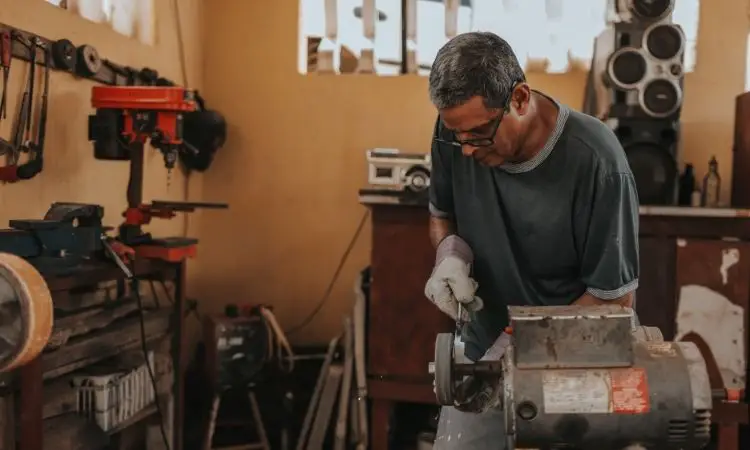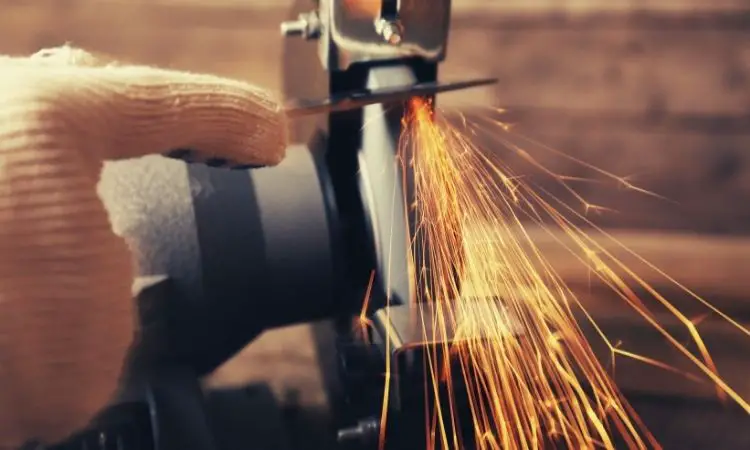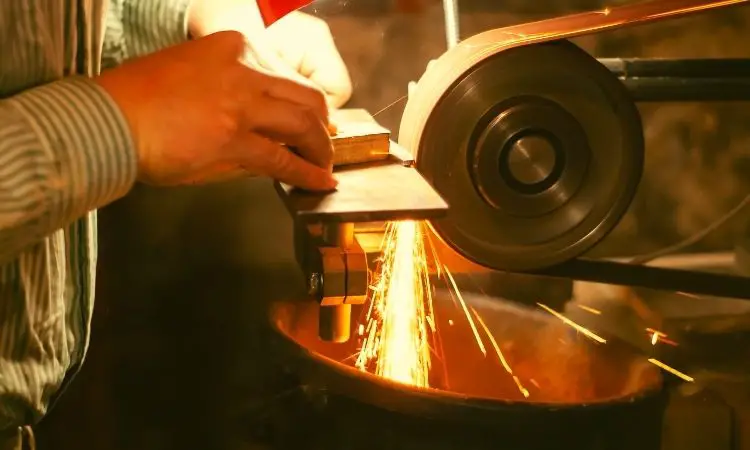Knives are essential tools in the kitchen, and they need to be kept sharp in order to perform their tasks effectively. A knife grinder is a tool you need to keep your knives sharp. There are three different types of knife grinders: electric, manual, and stone. Each type has its own advantages and disadvantages. Let's take a closer look at each of these options so you can determine which type would work best for your needs.
What Are The Variant of Knife Grinder?
Electric Knife Grinders
Electric knife grinders are the most expensive option, but they're also the most convenient. You simply plug them in and they're ready to use. They're also the quickest way to sharpen your knives.
However, electric knife grinders can be difficult to control and may overheat if used for too long. But if you're a beginner who doesn't want to spend too much time honing their knives, then this may be the right choice for you.
Advantages:
- Quick and easy to use
- Do not require much physical effort or skill
- Perfect for beginners
Disadvantages:
- More expensive than other types of knife grinders
Manual Knife Grinders
These grinders are also known as whetstones and they work by rubbing your knife against a rough surface to sharpen it. This can be a great way to get used to using a knife grinder, but it does require a lot of skill and practice.
You'll need to make sure that you're applying the right amount of pressure when grinding your knives in order to avoid damaging them or making them duller instead of sharper. So, if you want to take your time and learn how to hone your knives properly, then this may be the right choice for you.
Advantages:
- Inexpensive
- Provides excellent control over the sharpening process
- Allows for more precision when honing knives
Disadvantages:
- Time-consuming compared to the electric grinder.
Stone Knife Grinders
These grinders are similar to manual knife grinders, but they use water stones instead of whetstones. They're also often more expensive than other types of knife grinders. However, stone knife grinders provide excellent quality when it comes to honing your knives. But when using this type of grinder, you'll need to be very careful not to damage your knives.
Advantages:
- Produce high-quality results
- Can be used on a variety of different knives
- Effective and efficient for experienced users
Disadvantages:
- Requires a lot of skill and practice
What Are the Different Types of a Bench Grinder?
There are two different types of bench grinders:
Stationary Bench Grinders
A stationary bench grinder is a type of bench grinder that is fixed in place and can't be moved. Stationary bench grinders are typically used for heavier grinding jobs, such as grinding down metal or sharpening tools.
They come with more powerful motors than portable bench grinders, so they can handle tougher jobs. If you need a bench grinder for heavy-duty jobs, then a stationary bench grinder is the best option.
Portable Bench Grinders
A portable bench grinder is a type of bench grinder that is small and can be moved easily from one place to another. Portable bench grinders are typically used for lighter grinding jobs, such as sharpening knives or cleaning tools.
They come with less powerful motors than stationary bench grinders, so they can't handle as tough of jobs. If you need a bench grinder for light-duty jobs, then a portable bench grinder is the best option.
Why Do You Need a Bench Grinder?
A bench grinder is a tool that is used to sharpen, clean, or polish tools and materials. Bench grinders are typically made with two grinding wheels: one on each side. The wheels are made of different materials, such as aluminum oxide or silicon carbide.
The type of material that you will use depends on the type of material that you need to grind or sharpen.
For example, if you are sharpening a knife, then you would want to use an aluminum oxide wheel because it is harder and can provide a sharper edge.
There are many different reasons why you may need a bench grinder. Some common reasons include:
- Sharpening or grinding tools and materials
- Polishing metals, such as jewelry or metal parts
- Smoothing rough edges on wood, plastic, or other materials
- Cleaning off the rust from metal surfaces
Ultimately, if you work with tools or materials that require sharpening, cleaning, or polishing, then you will need a bench grinder.
What Is the Difference Between a Bench Grinder and a Pedestal Grinder?
A bench grinder and a pedestal grinder are two different types of grinding tools that are used for similar purposes. However, there are several key differences between the two tools.
First, bench grinders are typically smaller and can be mounted to a bench or tabletop, while pedestal grinders are much larger and need to be placed on
A bench grinder is a type of tool that is used for sharpening, cleaning, or polishing. It typically consists of two grinding wheels: one on each side. The wheels are typically made of different materials, such as aluminum oxide or silicon carbide.
The main difference between a bench grinder and a pedestal grinder is that a pedestal grinder is much larger and typically has more powerful motors. This makes it better suited for heavy-duty grinding jobs, such as sharpening metal tools or removing rust from surfaces.
If you need a tool for heavy-duty grinding work, then a pedestal grinder is the best option. However, if you need a tool for light-duty jobs, then a bench grinder is the better choice.
The main difference between a bench grinder and a pedestal grinder is their size and power. A bench grinder is typically smaller and less powerful than a pedestal grinder, which makes it ideal for lighter tasks such as sharpening knives or small parts.
A pedestal grinder, on the other hand, is larger and more powerful, making it better suited for heavier jobs such as removing rust or sharpening metal tools.
If you need a grinding tool for heavy-duty tasks, then a pedestal grinder is likely the best choice. However, if you need a tool for lighter jobs, then a bench grinder may be the better option.
Conclusion:
Whatever the type of knife grinder you use, You must be very careful and use it with utmost precision. Remember to always put safety first when using any type of grinding tool. If you're not sure how to use a particular knife grinder, consult with someone who does before operating it.
With the proper precautions, any type of knife grinder can be a valuable addition to your home or shop.

I am a graduate of Bangladesh Agricultural University, where I delved into various agricultural disciplines, equipping me with a profound understanding of agriculture. Beyond academics, I have hands-on experience in gardening and crop cultivation. My passion is to embrace sustainable farming and horticulture. With a BSc in Agriculture, I am dedicated to promoting environmentally conscious and efficient agrarian practices.
Bachelor of Science (BSc) in Agriculture (Hons.)
Master of Science. (Sustainable Agriculture & Food Security ) (MS)
Bangladesh Agricultural University



![Best Knife Grinder for Beginners and Buyer Guide in 2022 [Top Pick] Best-Knife-Grinder-For-Beginners](https://broadpick.com/wp-content/uploads/2021/09/Best-Knife-Grinder-For-Beginners-1.jpg)
